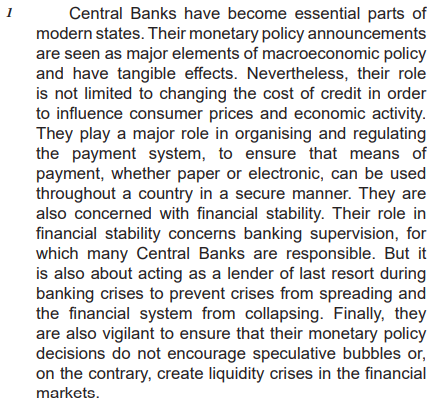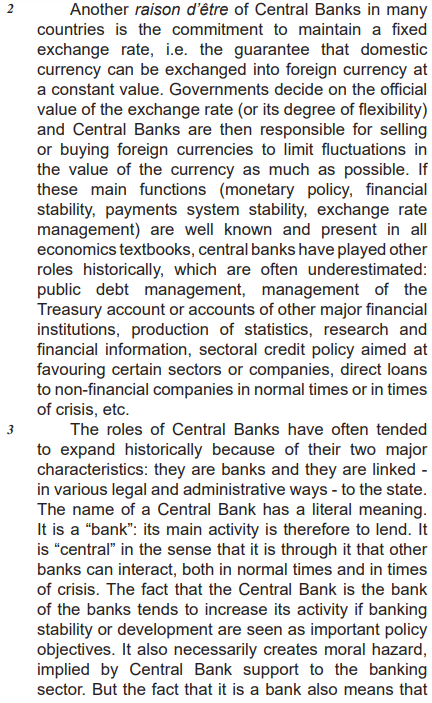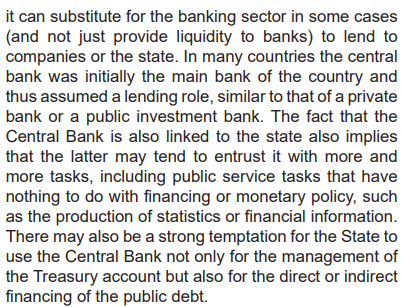Questões de Concurso Sobre inglês
Foram encontradas 19.451 questões
( ) The concept of translanguaging holds that students need to be exposed to languages one at a time.
( ) Translanguaging exercises are meant solely for group activities.
( ) Studies on how translanguaging can help measure student performance are under way.
The statements are, respectively,



Available at: https://www.parisschoolofeconomics.eu/docs/monnet-eric/history-of-central-banks_oxford.pdf. Retrieved on: May 13, 2024. Adapted.



Available at: https://www.parisschoolofeconomics.eu/docs/monnet-eric/history-of-central-banks_oxford.pdf. Retrieved on: May 13, 2024. Adapted.



Available at: https://www.parisschoolofeconomics.eu/docs/monnet-eric/history-of-central-banks_oxford.pdf. Retrieved on: May 13, 2024. Adapted.



Available at: https://www.parisschoolofeconomics.eu/docs/monnet-eric/history-of-central-banks_oxford.pdf. Retrieved on: May 13, 2024. Adapted.



Available at: https://www.parisschoolofeconomics.eu/docs/monnet-eric/history-of-central-banks_oxford.pdf. Retrieved on: May 13, 2024. Adapted.
McDonald’s and Wendy’s investors group demands fixes to franchisee child labor issues



Available at: https://www.msnbc.com/the-reidout/reidout-blog/ mcdonalds-wendys-investors-child-labor-rcna151722. Retrieved on: May 14, 2024. Adapted.
McDonald’s and Wendy’s investors group demands fixes to franchisee child labor issues



Available at: https://www.msnbc.com/the-reidout/reidout-blog/ mcdonalds-wendys-investors-child-labor-rcna151722. Retrieved on: May 14, 2024. Adapted.
McDonald’s and Wendy’s investors group demands fixes to franchisee child labor issues



Available at: https://www.msnbc.com/the-reidout/reidout-blog/ mcdonalds-wendys-investors-child-labor-rcna151722. Retrieved on: May 14, 2024. Adapted.
McDonald’s and Wendy’s investors group demands fixes to franchisee child labor issues



Available at: https://www.msnbc.com/the-reidout/reidout-blog/ mcdonalds-wendys-investors-child-labor-rcna151722. Retrieved on: May 14, 2024. Adapted.